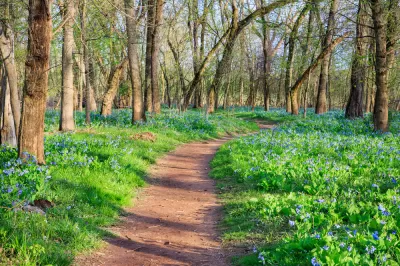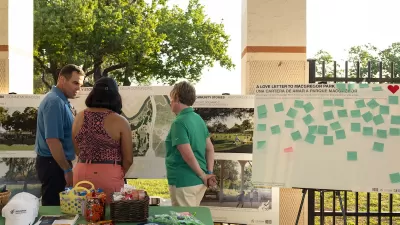The newly formed agency is tasked with developing and improving trail networks in the state.

Virginia’s new Office of Trails must now figure out how to spend the $89 million allocated to the new state agency, reports Wyatt Gordon for the Virginia Mercury.
According to Gordon, “While a number of lawmakers have already bragged to their constituents about securing funds for regional projects, no spending decisions beyond a first $5 million round have been made.”
“The official record of lawmakers’ financial negotiations came in the form of a letter to Secretary of Transportation Shep Miller this summer. The Commonwealth Transportation Board formalized legislators’ wish list in August via a resolution to assign $1 million each to five favored trails: the Eastern Shore Rail Trail, the Shenandoah Valley Rail Trail, the Tobacco Heritage Trail, the Peaks to Creeks Trail and the Craig Valley Trail.”
Angel Deem, the Virginia Department of Transportation’s chief of policy, says the office will prioritize the creation of a trails clearinghouse and a state trails plan as first steps toward ensuring transparency for the new agency. “The trails data clearinghouse will bring under one umbrella all information on trails across the commonwealth, including mapping, cost estimates, alignments and whether a project has already passed planning and environmental review.”
As Gordon points out, “With a $266 million projected price tag for the 43-mile Fall Line Trail through Richmond as a reference, exhausting the existing trails dollars ought to be no problem. The bigger conundrum will likely be where further funding can be found,” signaling a need to secure sustainable, long-term funding for the office.
FULL STORY: How will Virginia’s new Office of Trails spend $89 million?

Maui's Vacation Rental Debate Turns Ugly
Verbal attacks, misinformation campaigns and fistfights plague a high-stakes debate to convert thousands of vacation rentals into long-term housing.

Planetizen Federal Action Tracker
A weekly monitor of how Trump’s orders and actions are impacting planners and planning in America.

Chicago’s Ghost Rails
Just beneath the surface of the modern city lie the remnants of its expansive early 20th-century streetcar system.

Bend, Oregon Zoning Reforms Prioritize Small-Scale Housing
The city altered its zoning code to allow multi-family housing and eliminated parking mandates citywide.

Amtrak Cutting Jobs, Funding to High-Speed Rail
The agency plans to cut 10 percent of its workforce and has confirmed it will not fund new high-speed rail projects.

LA Denies Basic Services to Unhoused Residents
The city has repeatedly failed to respond to requests for trash pickup at encampment sites, and eliminated a program that provided mobile showers and toilets.
Urban Design for Planners 1: Software Tools
This six-course series explores essential urban design concepts using open source software and equips planners with the tools they need to participate fully in the urban design process.
Planning for Universal Design
Learn the tools for implementing Universal Design in planning regulations.
planning NEXT
Appalachian Highlands Housing Partners
Mpact (founded as Rail~Volution)
City of Camden Redevelopment Agency
City of Astoria
City of Portland
City of Laramie





























